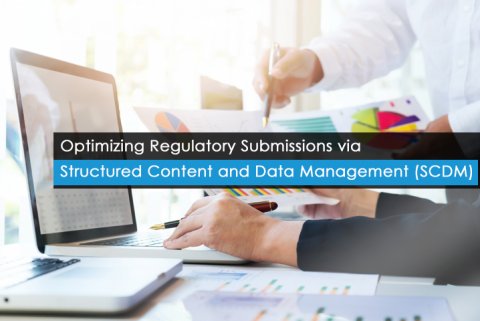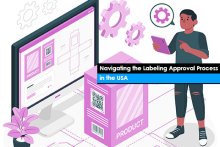Pharmaceutical companies incur about 25% of drug development costs into the documentation. Strategic imperatives can help accelerate the drug development pipeline along with scrutiny of clinical and Regulatory content, enabling efficient reuse of more standardized content. Identifying gaps associated with content authoring, review, and approval, describing set goals, and commencing a plan is a way to move forward. Applicants have identified approaches in managing, reusing, and automating data and content used in Regulatory filings yet don’t quite know where to begin.
Reasons for Deviation in Content Authoring and Data Management
I. Content Authoring
- An applicant has to generate multiple CMC, clinical and non-clinical submissions throughout the product lifecycle. In simple terms, content authoring requires numerous reviews and data verification for regulators before its internal approval and submission.
- Re-authoring or repurposing certain sections of the content is required to meet the standards of country-specific regions resulting in multiple variations.
- Staggered filings across regions for years due to traceability issues of the information included in the approved submission as per the regional HA preference.
- Partnering with contract firms with different system structures concerning data or internal documents.
II. Data Management
- For every product submission, there can be various authors, reviewers, and data ratifiers leading to subjectivity with narrative-based submissions. Possible complications arise when various parts within and across CTD modules have narratives by a large team of SMEs. These interrelationships result in different authors using the same data with the potential for deviation in interpretation between sections.
- Data changes during the lifecycle management of a product are difficult to trace to the validated and submitted version of the CTD.
- The gaps between the timeframe of regional filings lead to an independent individual statistical analysis based on changing data. This confuses sponsor inferences and HA’s assessments, leading to filing deviations.
- The use of data systems within an organization is heterogeneous across departments making it difficult to establish efficient documentation standards.
A few reasons for data variability are:
- The source of data origin
- Data collection in an unstructured format. Unstructured data further creates challenges for the creation and timing of submissions as well as tracking the data throughout the product lifecycle
- Regional discrepancies
- Product modality
Streamline Regulatory Submissions with SCDM
Structured content and data management (SCDM) helps pharmaceutical organizations navigate, create, approve, and repurpose content more efficiently during the drug development lifecycle. Structured content eliminates risks, improves time to market, and reuses content from a single source of truth.
Managing the content and keeping the process involved with technology at focus in Regulatory submissions is vital. To have these in the right place, pharmaceutical organizations must restructure their analysis from where the content originates.
To begin with, applicants must do the following:
- Examine Regulatory content by deciding the involvement of stakeholders in designing and approving a standardized structure that can be repurposed. Standardizing, structuring, and aiming towards more technology-enabled reusable content drives consistency, efficiency, and productivity.
- Work on standardization of areas where the content can be auto generated when it comes to certain sections of Clinical Study Reports (CSRs), safety information, and statistical analysis.
- Assess the benefit-risk ratio of applying SCDM systems. The granularity of the content with reusable sections with the application of appropriate metadata.
- An SCDM or any solution that automates the generation or reuse of the content is not a panacea and will not result in a ‘one-click’ submission. All of these are tools to help medical writers and filing teams operate more efficiently, but submissions will still be ‘authored’ for the foreseeable future.
The relevance of SCDM to CMC data depends on the practicality of transforming the data to a structured format to facilitate automated content authoring, including the reusability of submitted data. Targeting Module 4 and 5 data and narratives from eCTD will ensure a standardized framework. Such standardization will empower acceleration and provide precise data sources to a health authority review team and automate the authoring process in general. Nonetheless, concerning CMC data, most organizations and regulators’ initial steps of digitalization incorporate the development and execution of SCDM.
SCDM provides order and structure that will enable concurrent, collaborative review of submissions among global Health Authorities or within Agency committees and divisions. Reviewers can quickly access data earlier as components are completed and allocated to submissions with real-time dynamic and iterative assessments. Also, data provided for multiple Health Authorities in the cloud will encourage unified submission requirements and collaboration between Regulatory Agencies, facilitating more efficient and timely assessments.
Within the next 5 to 10 years, it is optimistic that the concepts of SCDM and the supporting technologies will expand beyond Module 3. The long-term aspiration and vision are to attain a single cloud-based global Regulatory submission for new drug applications utilizing SCDM and seamless yet secure information exchange on a cloud platform where Health Authorities can review collaboratively and parallelly. An expert in the domain can help in structuring the content so that it can be easily reviewed and reused for other marketing materials. Consult Freyr for comprehensive Regulatory support.





